Facial skin is a special matter. Due to constant negative external influences, she needs constant attention and care. Only regular care can preserve the youth of the skin and its blooming appearance. Care includes several complex stages that require consistency - cleansing, toning, moisturizing, nutrition and protection. Depending on your skin type (there are four), each of these steps will apply. It must be said that each age period has its own characteristics of facial care.
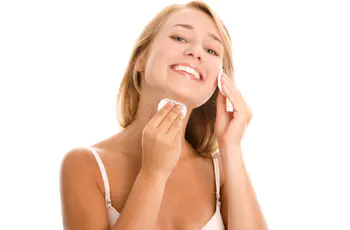
Skin types.
Due to constant negative external influences, the skin of the face becomes dehydrated, so the lack of moisture must be constantly replenished. For this purpose, there is a special group of moisturizing cosmetics. These are moisturizing creams, emulsions, gels, lotions, etc. It is necessary to select such products taking into account the characteristics and type of your skin.
The structure of the skin itself is the same for everyone, the only difference is in the intensity of the functioning of the sebaceous glands in individual areas and in the level of moisture contained. It must be said that skin type can change with age, despite this, proper care will help keep it in excellent condition. To accurately determine your type, you must first clean it of makeup and dirt. After this, you do not need to moisturize your skin for a couple of hours. After this period of time, you need to carefully examine your skin.
Dry skin is a sign of slow functioning of the sebaceous glands. Outwardly, it looks smooth and dry, without greasy shine, but at the same time there is an unpleasant tightness. This type occurs in young and mature adults. Determining that you have dry skin is quite simple: when you press on it, a red spot remains for a long time. Since dry skin does not have a protective film, it is highly susceptible to negative external influences, which lead to dryness and severe loss of moisture. With this type, constant additional hydration is important. Signs of aging in this variant appear very early.
Those with normal skin are most often young people. The skin of the face has good elasticity, an excellent level of moisture, excellent blood supply, and sebum is also produced normally. There is practically no peeling, due to which it easily remains fresh and clean for a long time. In normal skin, pores are practically invisible, there are no blackheads or red spots. Over the years, this type becomes dry. Regular and proper care helps keep your skin young for a long time, so signs of aging appear only after thirty years.
Combination or mixed skin is expressed in dryness in some areas and increased oiliness in others. Typically, overactive sebaceous glands are observed in the T-zone, and the cheeks and skin around the eyes remain very dry. That is why, when caring for this skin type, you should use two types of products intended for dry and oily skin.
Oily and problematic skin is characterized by excessive sebum production, which makes it constantly shiny, especially in the so-called T-zone (nose, forehead, chin). Most often, the pores in these areas are enlarged and dotted with blackheads. If the skin of the face is also problematic, pimples and acne often appear on it, plus the whole thing often becomes inflamed, which does not at all decorate the face. Excessive secretion of the sebaceous glands can be provoked by a huge number of factors, including an unbalanced diet, excess weight, increased sweating, malfunction of the endocrine glands, etc. If you put a paper napkin to your face, then if you have oily skin, greasy spots will remain on it. It is simply necessary to care for this type of face, carefully and regularly. But, despite all the shortcomings, oily skin ages later than other types at about the age of forty-five, the first signs of aging appear.
Daily facial skin care, stages.
Cleansing.
So, after you have determined your skin type, we determine for ourselves the sequence in caring for it. The main thing in care is regular cleansing of the skin. It is important to carry out the cleansing procedure twice a day, morning and evening, using cleansers that suit your skin type. It is not recommended to use soap, as it washes off the protective film and dries out the skin. In addition, these days the cosmetic industry has developed a whole arsenal of facial cleansing products for us. These can be various gels, foams, milks, creams, etc. The only thing is that in the case of problem skin and the presence of pimples and blackheads, you can use soap, since the delicate removal of excess sebum is important here.
Before cleansing your face, it is recommended to take a steam bath once a week it will soften the skin and help the pores open, as a result of which the cleansing process will be more effective and the skin will be prepared for further care. However, it should be recalled that this procedure is strictly contraindicated for hypertension, diseases of the cardiovascular system, rosacea, rosacea, and bronchial asthma.
It is also effective to use lotions to cleanse your face. In addition to its main purpose (cleansing), the lotion disinfects and tones the skin, drying out inflammation and improving blood circulation. In addition, this product contains extracts from medicinal plants, which have a restorative effect on the natural acidic reaction of the skin. It is preferable to use this product with a cotton pad, apply exclusively with soft circular movements along massage lines from the middle of the forehead and from the nose to the temples, from the chin to the earlobes.
For cleaning procedures, you should use water at room temperature, preferably boiled and settled. Too cold dilates the blood vessels, and too hot washes away the protective layer. Never go outside immediately after the cleansing procedure at least two hours must pass.
For deeper cleansing, mechanical and chemical peelings are necessary they effectively exfoliate dead skin layers, stimulating cell renewal, thereby maintaining youthful facial skin. There are scrubs and gommages for mechanical peeling. The scrubs include small and large abrasives (crushed apricot or almond kernels). Scrubs with larger particles are suitable for cleansing oily skin, while scrubs with small particles are suitable for normal skin. For deep cleansing of dry and sensitive skin, it is recommended to use gommages, since they do not contain small particles. After applying this product, you should wait a little until a crust forms. Then, with wet hands, you need to roll it off the skin, as a result of which the dead layer of cells will be removed along with the product. The scrub can be used by those with oily skin twice a week, and dry skin – once every two weeks. In the case of problematic types of faces, the scrub is generally contraindicated, since infection may spread throughout the entire face.
Ultrasonic peeling is also an effective cleansing procedure. The procedure is absolutely painless, and during cleansing with ultrasonic waves, the keratinized layer of cells is removed without damaging young cells.
Laser peeling is a very effective procedure that is performed in special cosmetic clinics. Using a laser, facial skin is polished, and traces of wrinkles are erased, including around the eyes, scars, folds, and scars. The procedure is performed under anesthesia. However, this method of cleansing and rejuvenating the skin is accompanied by a long recovery period (about a month). Superficial peeling with fruit acids will be no less effective, and the rehabilitation period will be significantly reduced. However, this procedure will not get rid of existing scars and scars.
Toning.
After cleansing, facial skin needs toning. Tonics perfectly remove remaining impurities, tighten pores, and also restore the acid-base balance. As a tonic procedure, you can massage with ice cubes for half a minute.
Hydration.
Now the skin is cleansed and toned and needs to be moisturized. Apply any cream with a moisturizing effect that suits your skin type and age along the massage lines. During application, you can perform a light self-massage, which will improve blood circulation and accelerate the penetration of nutrients into the cells.
Compresses have a very good effect on the skin. In warm and hot form, they should be done after cleansing procedures, immediately before applying nourishing cream or masks in cold form, compresses are applied to the skin as a completion of cleansing procedures, to narrow pores and give the skin elasticity. For compresses, it is good to use decoctions of medicinal plants. It must be said that the procedure has contraindications, in particular high blood pressure and rosacea.
Cosmetic masks.
Cosmetic masks are considered an ideal addition to skin care. The purpose of the mask can be absolutely anything (nutrition, hydration, treatment, etc.). Apply the mask only to a cleansed and steamed face, over the entire surface, leaving the area around the eyes and mouth untouched. The duration of the procedure is fifteen to twenty minutes, after which it is washed off with cool water. Masks must be done regularly twice a week. It should be noted that masks, like any cosmetic product, are designed for a certain type of face. Thick in composition and hardening on the skin, they are intended mainly for caring for oily skin types for dry skin types, creamy masks with a large number of softening ingredients are used, and for mixed skin types, wax-based masks are recommended. It is effective to make homemade moisturizing, toning, cleansing masks. If there is inflammation, irritation, acne or pimples on the skin, it is not recommended to use masks, as this can cause the spread of infection.
Nutrition.
To nourish your facial skin, it is enough to use a special night cream, again appropriate for your skin type and age. It should also be used after the cleansing procedure. This cream should contain antioxidant vitamins E, A, C, F, which perfectly soften the skin, eliminating the feeling of tightness and irritation.
To choose the right cosmetic products, it is recommended to consult a cosmetologist, since the same cosmetic product is not always suitable for people with the same skin type. Everything is purely individual and requires a special approach.
It is very good to make homemade nourishing masks using natural ingredients.
Caring for the skin around the eyes.
Since the skin of the eyelids does not contain sebaceous glands and fat cells, it is ultra-thin and extremely sensitive, and therefore needs special attention and care. In addition, facial expressions in this area negatively affect the external state of this area. After all, it is in this area that the first wrinkles appear. Constant hydration and nutrition of this area should be the main rule of every woman. Special eyelid products are applied with soft patting movements from the inner corner to the outer. The product is allowed to absorb, after which the residue is removed using a cosmetic napkin. It is important to select such products in accordance with the problem you want to solve (with a lifting effect, for swelling and dark circles under the eyes, etc.). When choosing a product, you should give preference to those that have a mark like “the product has passed ophthalmological control.”
Protection.
The use of protective equipment is a necessary condition for complete facial skin care. The composition of your daily care products must contain protective factors, especially in summer (SPF at least 20, in summer at least 35). When purchasing a protective product, you should choose those that promote collagen production. Such products even out skin texture, enhance its barrier functions, and improve complexion.
In conclusion, I would like to note that an integrated approach, consistency and thoroughness are important in facial skin care.
To prevent morning swelling, you should avoid drinking liquids the day before (preferably after eight hours). In addition, eyelid and skin products should be applied no later than an hour before bedtime.
After thirty years, it is important to go to a cosmetologist once a month, because during this period, cleansing and moisturizing alone is not enough, professional care is important.
Be sure to visit a lymphatic drainage massage specialist. The procedure is carried out in a course consisting of several procedures, the number of which is determined taking into account the condition of the skin. This procedure is aimed at improving blood microcirculation, as a result, skin tone increases, wrinkles and nasolabial folds are smoothed out. The effect lasts for several months.
Do not refuse to use special serums. They should be used under day and night creams. In them, biologically active substances are concentrated in a higher concentration, which facilitates their penetration into the deep layers of the epidermis. Serums should be used twice a year, in autumn and spring.
Don't be lazy, and the skin of your face will thank you!
What should you eat to get beautiful skin?
The easiest way to give your skin a healthy glow is with makeup. But you can go another way. You can achieve beautiful skin and maintain it in this condition through proper nutrition.
Look for seasonal and, if possible, organic produce. They will create the right foundation for your glowing skin. Eating only seasonal foods may even help you lose some weight! Exercise helps a lot too. Imagine that stretching is the body’s smile, and dancing is its laughter, and everything will immediately go smoothly.
Digestion
Good skin is impossible without proper digestion. Its disorder can be easily detected by dull, blemish-prone skin. Naturopaths believe that this is due to the growth of fungal colonies in the intestinal tract. From there they penetrate the blood and spread throughout the body, poisoning it with toxins. Diet disorders, alcohol consumption, antibiotics, and stress can lead to this.
Probiotics and prebiotics will help cope with this problem. It is worth giving up alcohol and refined sugar, and increasing the amount of plant fiber. If the fibers are not digested, as is the case with, for example, bananas or Jerusalem artichokes, but serve as food for your bacterial flora, then they are called prebiotics. Probiotics - live yogurt, kefir, sauerkraut, miso, tempeh - help increase the number of beneficial bacteria in the intestines. Fiber-rich foods will help the intestines function properly, maximizing the absorption of substances beneficial to the skin.
Helpful advice: if you have an upset stomach or heaviness, try one of these natural remedies that can help:
• Chew a pinch of anise seeds, cardamom or fennel.
• Crush a few peppermint shoots in a glass of water at room temperature, leave for a few minutes and drink the infusion
• Pour a few slices of fresh ginger root into hot water and drink to help relieve stomach pain.
Liver
Liver health is essential for proper detoxification of the body. An overloaded liver that cannot cope with the removal of toxins often signals problems with rashes, itching, acne, and acne. Other symptoms include bloating, heartburn and difficulty losing weight.
Helpful advice: helping your liver effectively cleanse the body and maintain a healthy glow of the skin is simple:
• Start each day with a glass of hot water with a slice of lemon or a drop of lemon juice.
• Eat plenty of fresh vegetables and greens
• Add garlic and turmeric to your diet
• Avoid alcohol and caffeine
• Use a tongue scraper in the morning to remove any toxic mucus that has accumulated overnight (especially if there was a big party the night before)
Plant food
Fresh fruits and vegetables deliver a lot of useful substances to our body. Red fruits and vegetables - red peppers, watermelon, some berries, tomatoes - contain lycopene, which protects skin from aging UV radiation and also stimulates skin cell renewal. Orange foods - mango, melon, carrots - contain beta-carotene, which is converted in the body into vitamin A, which is beneficial for both skin and eyes. Greens—from spinach to avocado, from kale to green beans—are rich in antioxidants, true bio-beauty aids. Purple plant foods - eggplant, cherries, black grapes, beets - are full of flavonoids that are good for the heart and combat the effects of photoaging on the skin.
Helpful tip: Eat blueberries. This little berry contains a ton of important nutrients, which is why you often see it in health food dishes. It's packed with flavonoids, antioxidants that keep your skin youthful and radiant. It contains a lot of vitamin C, which promotes collagen production and thus improves skin elasticity. Berries are also credited with the ability to maintain connective tissue in tone, which helps the skin to be dense and elastic. Don't overdo it - blueberries are high in natural sugar.
Hirst Shkulev Publishing
Moscow, st. Shabolovka, building 31b, 6th entrance (entrance from Konny Lane)
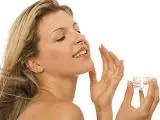
Nutrition is the most important stage of skin care. Regular nourishment makes the skin soft and smooth, preserves and restores the natural moisture balance. Nutrition is an essential part of daily care, as it contributes to overall healthy skin.
Our body needs nutrients. In the same way, the skin needs food, sustenance, and therefore must be “fed.” Skin nutrition is necessary to compensate for the deficiency of compounds important for the skin: lipids, proteins, carbohydrates, vitamins, etc.
At the cellular level, this process consists of active and passive transport of molecules into the cell.
Almost all cosmetologists believe that the skin of young, healthy women under 20-25 years of age does not need special nutrition. Creams at this age can only be used when signs of dry skin occur, when there is special sensitivity to ultraviolet radiation, or when there are adverse effects of external factors.
"The older the skin, the more it needs nutrition and hydration."
However, areas susceptible to early fading - the corners of the lips, the outer corners of the eyes and the forehead - require nutrition already at a young age, since expression wrinkles appear here first. Likewise, the skin around the eyes needs especially careful care and protection. To nourish it, you need to use special creams and gels for the skin around the eyes.
Nourishing creams are products that moisturize, soften the skin and restore its functions. It is the nutritious mixture of fats and moisturizers that is necessary to maintain smooth, even and delicate skin. Modern cosmetology attaches special importance not only to how to properly nourish the skin, but also to the selection of products that are used to prepare creams. Preference is given to natural ingredients. When choosing a nourishing cream, you should also take into account your individual characteristics and your skin type.
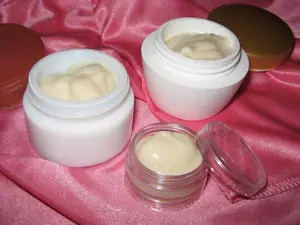
Dry skin that needs increased nutrition should be lubricated with a fortified cream 2-3 times a day. If 20-30 minutes after the first application of the cream there are almost no traces of the product left on the skin, the procedure must be repeated. The cream is reapplied not only on wrinkles (“crow’s feet”), but also on the chin and forehead.
If dry skin is exhausted and has wrinkles, then you need to provide it with deeper hydration and intensive nutrition. For these purposes, it is recommended to use a fortified fatty cream on a damp swab. Take a small amount of cream onto a tampon moderately soaked in salted water. It is applied to the skin with light, jerky, pressing movements, starting from the contour of the face and gradually moving upward. The cream is applied more generously to those areas of the skin where there are wrinkles. Then it is advisable to do a light massage. This procedure must be carried out daily.
“For aging facial skin, use a cream that contains a lot of water and fat.”
Oily skin needs to be nourished just like any other. Before applying the nourishing cream, you need to thoroughly clean the skin and wipe it with acidified lotion or salted water, infusion of horsetail or sage.
It is better to use an acidified lotion containing up to 15% alcohol after cleansing the skin only on the affected areas (to tighten the already cleaned pores).
For women with thick skin, it is better to use liquid cream.
Frequent washing of the face with warm water and soap, and the use of alcohol-containing products lead to the fact that oily skin loses not only excess fat, but also that necessary for normal functioning. Therefore, for oily skin, creams are used that restore the amount of vitamins and active compounds. Creams contain wax, vitamins, disinfectants, herbal extracts, benzoic acid and sometimes sulfur.
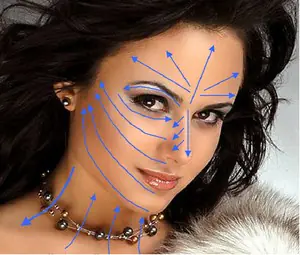
To reduce the shine of the face, a non-greasy cream is used, in which the fat is replaced by a fatty acid (stearin). This product is easily absorbed, reducing shine and irritation of the skin. The cream is also applied under the powder.
In the evening, if you have oily skin, it is not advisable to apply a nourishing cream, with the exception of the lower eyelid, since its skin is usually dry. For this purpose, use special creams for the eyelids or for dry skin.
The cream can sometimes be replaced with vegetable oil (olive, corn, peach, or, in extreme cases, sunflower). It is advisable to add castor oil or, if possible, sea buckthorn and rosehip oils to the vegetable oil.
If after cleansing the skin feels a little tight, wipe it with liquid creams.
Without consulting a cosmetologist or dermatologist, it is not advisable to use degreasers containing more than 30% alcohol.
For oily skin, several courses of cosmetic facial massage and masks also give good results. However, you should not do massage or self-massage using fatty and emollient creams. For this purpose, you need to take talc or purified vegetable oil.
Now some tips for using and applying nourishing creams.
- Nourishing creams are used in the evening (with the exception of oily skin) 1.0-1.5 hours or at least 30 minutes before bedtime and in the morning 30-40 minutes before going outside.
— It is not advisable to lubricate your face immediately before going to bed. Studies using infrared spectroscopy have confirmed that deep penetration of the stratum corneum occurs 10-20 minutes after applying the cream. Therefore, 30 minutes after applying the product to the skin, its excess is removed with a paper napkin or cotton swab.
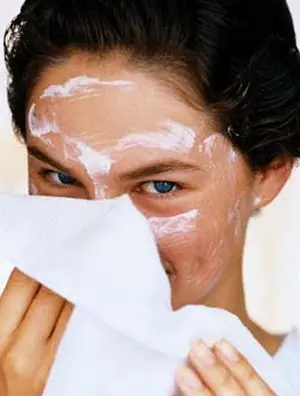
— If it is not possible to remove shine from the skin with cotton swabs after 30 minutes, you need to press both palms to your face with the back of your hands several times.
— There is no need to apply cream from a tube or jar directly to the skin. Warm the cream in your hands. A thick or chilled product may cause unwanted vasoconstriction, weakening the effect of the drug.
— Before applying the cream, rub it between the fingers of both hands. In the same way, the cream is applied to a damp swab.
— It is better to apply nourishing cream to a moisturized face, as water helps it penetrate the skin more quickly. Apply the cream with light, sliding movements of your fingertips in the direction of the skin lines for 3-5 minutes. You need to take a little nourishing cream with three fingers of each hand and generously lubricate your face and neck.
Then lightly pat your face with the tips of three straight, closed fingers of both hands in the following directions:
- from the center of the chin to the earlobe
- from the corners of the mouth to the middle of the ear
- from the wings of the nose to the middle of the ear
- from the center of the forehead to the temples
- from the inner corner of the eye above the eyebrow to the border of the hairline
- neck - from the collarbones up to the chin.
— The skin on the eyelids requires a particularly careful approach. Under the eyes, with very light movements, tap the skin with the pads of the 3rd, 4th, 5th fingers in a circle. Close your eyes and try to relax. Start tapping from the outer corner of the eye along the lower eyelid towards the inner corner of the eye, again returning to the starting position. Try to massage the outer corners of the eyes more intensely. Claps must be combined with frequent and slow pressure. It is good to end self-massage with a smooth and light vibration movement - a finger shower.
“You can’t apply a thick layer of cream to the skin either in the evening, or in the morning, or during the day.”

— For dry skin or wrinkles, you need to apply the cream with a damp swab and only then begin self-massage.
— It is not advisable to lubricate areas of skin on the upper lip or chin, if coarse hair grows there, with a nourishing cream. The use of hormonal creams that enhance hair growth is generally contraindicated in this case.
- 30-40 minutes after applying the cream, remove it with a cotton swab, moderately moistened with lotion, acidified or salted water or tea. Pat one or two tampons on the face for 1-2 minutes, as if driving in the cream. After this, wring out the tampon and remove the cream with light jerky movements, especially carefully - from the tip of the chin, along the contour of the face, from the cheekbones, from the bulge of the forehead, lightly from the temples and the sides of the neck. Then the skin of the face is thoroughly dried with a napkin.
What should be the layer of nourishing cream? It is a false belief that the drier and thinner the skin, the more nourishing cream it needs. Do not apply a thick layer of cream to the skin either in the evening, or in the morning, or during the day. This is especially harmful for women who have a puffy face, bags under the eyes, swollen eyelids, a tendency to skin irritation, and also with dilated capillaries. In case of these phenomena, as well as in case of oily skin type, it is necessary in the evening, 20-30 minutes after applying the cream, to remove it with a swab moistened with lotion or tea.
If a nourishing night cream is applied to the skin in a thick layer, the water contained in the cream will evaporate overnight, turning the cream into an ointment. The layer of ointment remaining after this can cause prolonged vasodilation and lead to redness and peeling. As a result, the skin becomes loose and flaccid.
It is not advisable to use nourishing creams daily. From time to time you need to give your skin a rest, as it must also breathe through the pores and secrete natural oil.
If you have time, you can devote the whole day to skin care: during the day, lubricate your face with nourishing cream in the morning, afternoon and evening for an hour and a half, each time removing it with cold sour milk or lotion. A little later, the cream is applied under the eyes, on the temples, forehead and neck, and in the evening before going to bed, remove it with a damp swab.
"It is not recommended to use the same medications or skin care products for more than a month."
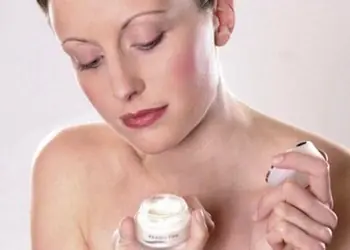
Some women are afraid that their skin will stop working on its own due to increased nutrition and an abundance of active substances. Under no circumstances should you completely deprive her of nutrition! Others notice that the skin becomes so “gluttonous” that you don’t have time to nourish it. Indeed, the skin may become accustomed to the active substances. As soon as the skin is deprived of this product, irritations that were previously smoothed out by the cream begin to appear in the form of tension and other unpleasant phenomena. They disappear as soon as the same cream is applied again. In this case, only changing the drug helps.
If the skin is excessively “gluttonous” for creams, it is recommended to consistently change the products, reducing the fat content in them, i.e., apply a new cream to the skin every day with less fat content than the day before, and after a while completely abandon the usual active nourishing creams. A slight feeling of tension at first is normal.
It is not recommended to use the same medications or skin care products for more than a month. Therefore, it is necessary to change creams from time to time, taking into account the time of year, solar activity, and their vitamin composition.
If the skin does not tolerate some of the components contained in creams (honey, hops, aloe, hormones, vitamin A, etc.), you should immediately stop using them.



